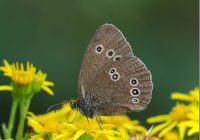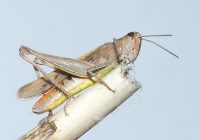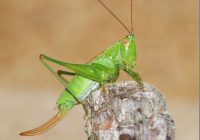Dr Phil Smith’s Wildlife Notes
July 2018
With the countryside in flames, farmers losing millions and the water-supply industry in turmoil, the TV weather presenters finally acknowledged the longest summer drought since 1976 and started to talk about the “chance” of showers, rather than the “risk”! We actually had six days with measurable rain during July but only on 29th was there enough to make a difference to the parched landscape. A spate of fires along the coast seemed inevitable. The biggest at Hightown dunes, Altcar Training Camp and Ainsdale Sand Dunes National Nature Reserve each destroyed several hectares, while several smaller blazes were also reported. Further afield, about a third of Lytham St. Anne’s Local Nature Reserve went up in flames. These fires can kill small mammals, reptiles and invertebrates but most plants usually recover quite quickly. Thus, after three weeks, the Hightown fire site was already showing regrowth of vegetation.
As in June, the heat was good for duneland butterflies, many appearing weeks earlier than normal. Graylings peaked before the middle of the month and there was a tremendous hatch of Small Coppers with 30+ on Pinfold meadow at Ainsdale NNR. Gatekeepers, Meadow Browns and Common Blues were numerous throughout, while other species had a shorter flight period. Thus, Ringlets had largely gone by early July, though a straggler posed nicely at the Ainsdale Woodland Walk on 17th. A particular highlight was Pete Kinsella’s discovery of Purple Hairstreaks on oaks at Ainsdale NNR. I managed to see several circling around the treetops but they were too distant to photograph.
Also benefitting from the warm weather, grassy areas were alive with our three grasshoppers, the Field, Mottled and Common Green. The first two have several colour-forms, a pale straw one being especially appropriate this year. We hardly ever see Northern Dune Tiger Beetles in July, soI was surprised to find oneat the Devil’s Hole on 1st. However, three days later, I counted 63 there; these were second generation adults that usually don’t appear until early August.
Dragonflies also had a good month with plenty of Emperors and Black-tailed Skimmers, the latter basking on the Sands Lake boardwalk. Both Ruddy Darters and Migrant Hawkers appeared several weeks before their normal flight period.
My main plant survey this summer recorded changes in populations of the unassuming Flat-sedge since it was last studied here 10 years ago. Found in dune-slacks and damp grassland, this Red Data Book species is one of the most rapidly declining plants in Britain. I recorded 22 colonies, seven of which were new, counting over 12,600 plants. The largest numbers occur where trampling keeps the vegetation low.
Patricia Lockwood joined me on 23rd to visit Marshside, our targets being Common and Lax-flowered Sea-lavenders highlighting the saltmarsh with their bright purple blooms. They produce a rare hybrid and, with careful searching, we found several of them. Among butterflies attracted to the flowers was a migrant Painted Lady, while beds of Common Couch at the foot of the seawall were heaving with Short-winged Coneheads.
As part of his research for a Handbook on gentians and centauries, Tim Rich came up from Cardiff specially to see the hybrid between the Common and Seaside Centauries. I recommended several places where he could easily find this rare plant. Patricia and I met him at Birkdale Green Beach where there was a fine display of the parents and the hybrid, together with the Lesser Centaury for good measure. He was rather pleased.
As usual, I was involved with several well-attended guided walks during the month. A botany group from Bradford came to see the special plants of Crosby Coastal Park on 10th. These included six different kinds of Evening-primrose, though the best colony had been burnt. Patricia and I showed them hundreds of Common Broomrape on Sea Holly, plenty of Isle of Man Cabbage and the Dune Wormwood at its only extant British locality. My annual dragonfly walk at Mere Sands Wood on 14th provided eight species, several of them in the hand. A few days later, twenty members of the Liverpool Botanical Society enjoyed the enormous variety of plants on Birkdale Green Beach where 335 species have been recorded. Given a rare opportunity to visit a restricted area, over 50 Hightown residents and supporters of Gems in the Dunes gathered at Altcar Training Camp on 27th. We were able to see the spectacular extent of the recent fire and management works to remove invasive Japanese Rose, which has created bare sand patches. These had already been colonised by Northern Dune Tiger Beetles. Finally, a series of scrapes dug several years ago produced four species of amphibian, including a baby Natterjack Toad, a suitable climax to an entertaining walk and another exciting month on the Sefton Coast.




